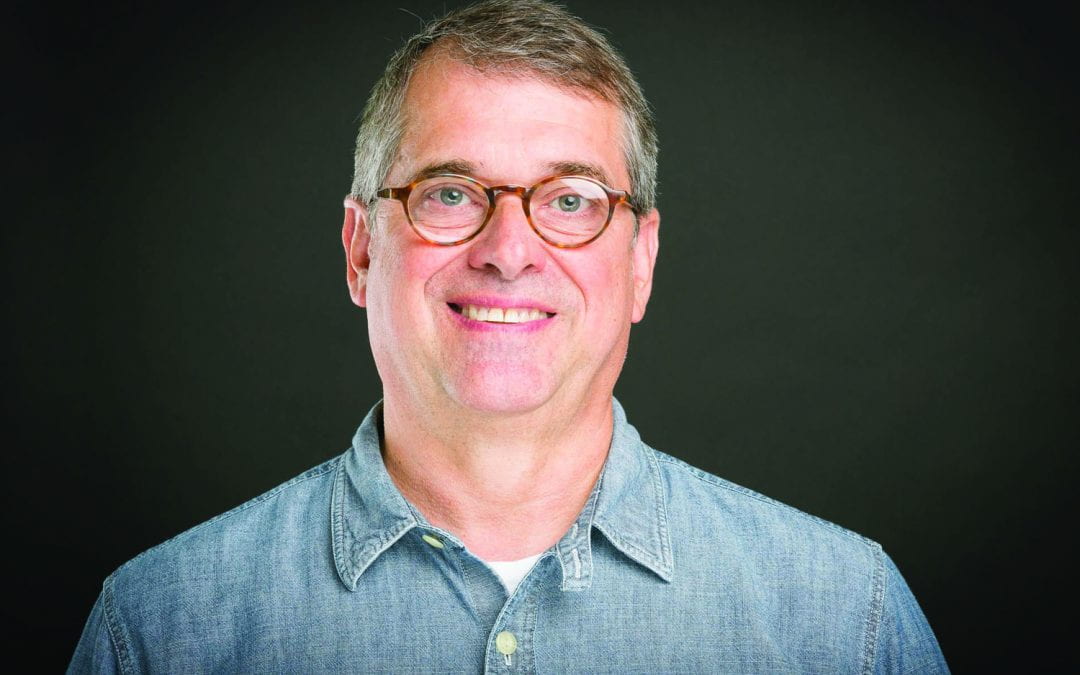Bill Eubanks (B.L.A. ’81) is a licensed landscape architect who currently serves as the creative director of Seamon Whiteside in Mount Pleasant, South Carolina. During this conversation, he shared how he gives back to his profession through ASLA involvement, and discussed the importance of mentoring.
How did you first become interested in landscape architecture?
As a high school senior in Pine Bluff, Arkansas, when I was narrowing my choices of possible majors, I had never heard of landscape architecture. Based on what interested me and what I thought I might possibly be good at, I had narrowed my choices to architecture, graphic design or forestry. I finally decided on architecture. While at freshman orientation, John Williams told us about a new program they were starting the next year. When I heard the term “landscape architecture” for the first time, it was like a light bulb went off over my head. I just knew that was the path for me. I was right.
Why did you decide to go to the University of Arkansas and/or the Fay Jones School?
Although not an exciting reason to pick the U of A, the simple and honest answer is that it was the only in-state school offering a degree in architecture. But I had always dreamed of going there, so that was fine with me. Like every kid in Arkansas, I grew up watching the Razorbacks. I just felt like it was “my school.” Also, I was lucky enough to be there when Fay Jones was a professor, not just the name of the school.
What are your favorite types of projects to work on?
I like projects that challenge me, both creatively and technically, and that includes public outreach. I heard someone say, long ago, that the more people a project will touch the more important the project. I believe that. So, anything that touches the public in general or influences the public realm deserves a lot of attention. From a process standpoint, I enjoy projects with a robust charrette component.
What unique experiences or perspectives do you have that make you stand out as a landscape architect?
I’ve had some incredible mentors in my career, most notably Robert Marvin, FASLA; Ed Pinckney, FASLA; and Kenny Seamon, FASLA. Although very different from one another in their approach and personal philosophies, they all had a passion for the profession and loved making places better. I’ve been able to grow as a landscape architect by working closely with these men – watching and listening – and absorbing as much as possible.
What are some of your interests and involvements outside of landscape architecture?
I love being outdoors and try to get to the mountains a few times a year for a change in scenery and terrain. Hiking in the mountains is very therapeutic for me. Perhaps this is because it reminds me of the Ozark Mountains of Arkansas. Living in coastal South Carolina, I have developed a love of kayaking. The smell of pluff mud and the sounds of the marshes and creeks are oddly comforting. I also really enjoy finding fossilized shark teeth. I have thousands of them. I also need to make things sometimes. It feeds a different creative compulsion.
How did you get involved in the American Society of Landscape Architects?
In my first job, a co-worker encouraged me to get involved. I became a chapter newsletter editor. I did that in two ASLA chapters. From there, I went on to be a chapter president and then a trustee. That led to me being elected as ASLA vice president of membership. In 2007, I became a Fellow of ASLA, which was a humbling experience. A few years later, I did two more terms as trustee. During this time, I’ve also served on and chaired many national committees and have participated in several accreditation visits. I do it for one simple reason: Any profession worth being a part of is worth giving back to.
What’s your favorite part of working in your field?
Design! I am at my happiest with pens and markers in hand, putting ideas on paper. I love digging into the details and figuring out the ways different materials come together while also creating space. It’s all about problem solving. But I also enjoy the broader, larger scale, planning side of things too. This is challenging because you are creating the vision other designers will follow. At this point in my career, I also find it rewarding to mentor younger professionals, probably because I remember how my mentors affected my path as a designer.
What has been the most rewarding project that you’ve worked on and why?
It’s hard to pick just one project as the most rewarding because different projects have been rewarding in different ways. If it’s a residential community, I’d pick I’On in Mount Pleasant, South Carolina, a new urbanist community that is well known and very successful. If it’s urban design, I’d pick the Coleman Boulevard Master Plan because it’s a good example of “sprawl repair.” But one of the most rewarding projects was the James E. Clyburn Research Center at the Medical University of South Carolina, because I introduced the idea of an urban farm on a medical university campus, and that farm has had a transformative effect on students, patients, faculty and staff. It’s all about good health and a sense of community. The actual design is simple. It was the idea that really mattered.
